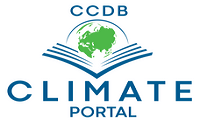Forum
ADAPTATION
Quote from mohibullah@ccdbbd.org on May 19, 2021, 6:46 pmUNEP Adaptation Gap Report 2020: Strong action on reducing greenhouse gas emissions is essential to meet the Paris Agreement goals of holding global warming this century to well below 2°C and pursuing 1.5°C. This would limit, but not eliminate, the impacts on vulnerable countries and communities. However, given the current uncertainties around efforts to limit climate change, the world must plan for, finance and implement climate change adaption measures appropriate for the full range of global temperature increases or face serious costs, losses and damages.
Adaptation – reducing countries’ and communities’ vulnerability to climate change by increasing their ability to absorb impacts and remain resilient – is a key pillar of the Paris Agreement. The Agreement requires all of its signatories to plan and implement adaptation measures through national adaptation plans, studies, monitoring of climate change effects and investment in a green future.
The fifth edition of the UNEP Adaptation Gap Report finds that such action is lagging far behind where it should be. It finds that while nations have advanced in planning and implementation, huge gaps remain, particularly in finance for developing countries and bringing adaptation projects to the stage where they bring real reductions in climate risks. Public and private finance for adaptation must be stepped up urgently, while faster implementation is required on adaptation projects.
The report has a special focus on nature-based solutions – locally appropriate actions that address societal challenges, such as climate change, and provide human well-being and biodiversity benefits by protecting, sustainably managing and restoring natural or modified ecosystems. Increasing financing for and scaling up nature-based solutions will be particularly critical to help meet the goals of the Paris agreement.Adaptation action is now widely embedded in policy planning across the world.
• Adaptation action is critical to enable public and private actors to prepare for and respond to the impacts of climate change.
• 72% of countries have adopted at least one national-level adaptation planning instrument, while a further 9% are in the process of developing one.
• Most developing countries are preparing National Adaptation Plans, a key mechanism to strengthen the focus on adaptation.
• Around half of countries’ planning documents address risks comprehensively, include relevant stakeholders and have dedicated planning processes in place.
• Progress in adaptation planning is expected to continue as rising climate awareness drives an increasing number of sub-national initiatives.Sources: https://wedocs.unep.org/bitstream/handle/20.500.11822/34727/AGR_KM.pdf?sequence=3&isAllowed=y
UNEP Adaptation Gap Report 2020: Strong action on reducing greenhouse gas emissions is essential to meet the Paris Agreement goals of holding global warming this century to well below 2°C and pursuing 1.5°C. This would limit, but not eliminate, the impacts on vulnerable countries and communities. However, given the current uncertainties around efforts to limit climate change, the world must plan for, finance and implement climate change adaption measures appropriate for the full range of global temperature increases or face serious costs, losses and damages.
Adaptation – reducing countries’ and communities’ vulnerability to climate change by increasing their ability to absorb impacts and remain resilient – is a key pillar of the Paris Agreement. The Agreement requires all of its signatories to plan and implement adaptation measures through national adaptation plans, studies, monitoring of climate change effects and investment in a green future.
The fifth edition of the UNEP Adaptation Gap Report finds that such action is lagging far behind where it should be. It finds that while nations have advanced in planning and implementation, huge gaps remain, particularly in finance for developing countries and bringing adaptation projects to the stage where they bring real reductions in climate risks. Public and private finance for adaptation must be stepped up urgently, while faster implementation is required on adaptation projects.
The report has a special focus on nature-based solutions – locally appropriate actions that address societal challenges, such as climate change, and provide human well-being and biodiversity benefits by protecting, sustainably managing and restoring natural or modified ecosystems. Increasing financing for and scaling up nature-based solutions will be particularly critical to help meet the goals of the Paris agreement.
Adaptation action is now widely embedded in policy planning across the world.
• Adaptation action is critical to enable public and private actors to prepare for and respond to the impacts of climate change.
• 72% of countries have adopted at least one national-level adaptation planning instrument, while a further 9% are in the process of developing one.
• Most developing countries are preparing National Adaptation Plans, a key mechanism to strengthen the focus on adaptation.
• Around half of countries’ planning documents address risks comprehensively, include relevant stakeholders and have dedicated planning processes in place.
• Progress in adaptation planning is expected to continue as rising climate awareness drives an increasing number of sub-national initiatives.
Sources: https://wedocs.unep.org/bitstream/handle/20.500.11822/34727/AGR_KM.pdf?sequence=3&isAllowed=y
Quote from Sanzida on January 27, 2022, 10:45 amDo Bangladesh has an adaption plan? If they have it, can you give me a brief summary of it.
Do Bangladesh has an adaption plan? If they have it, can you give me a brief summary of it.

